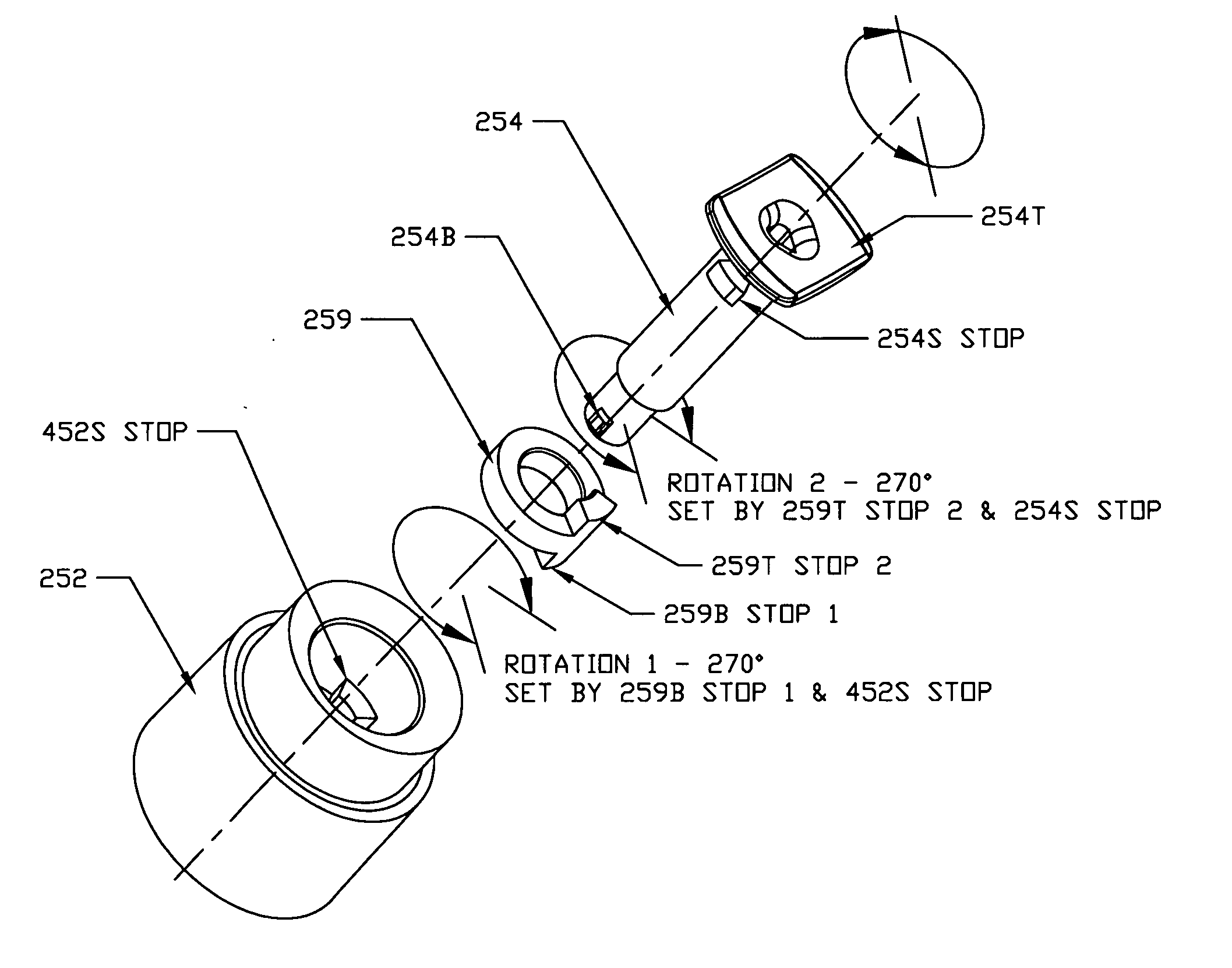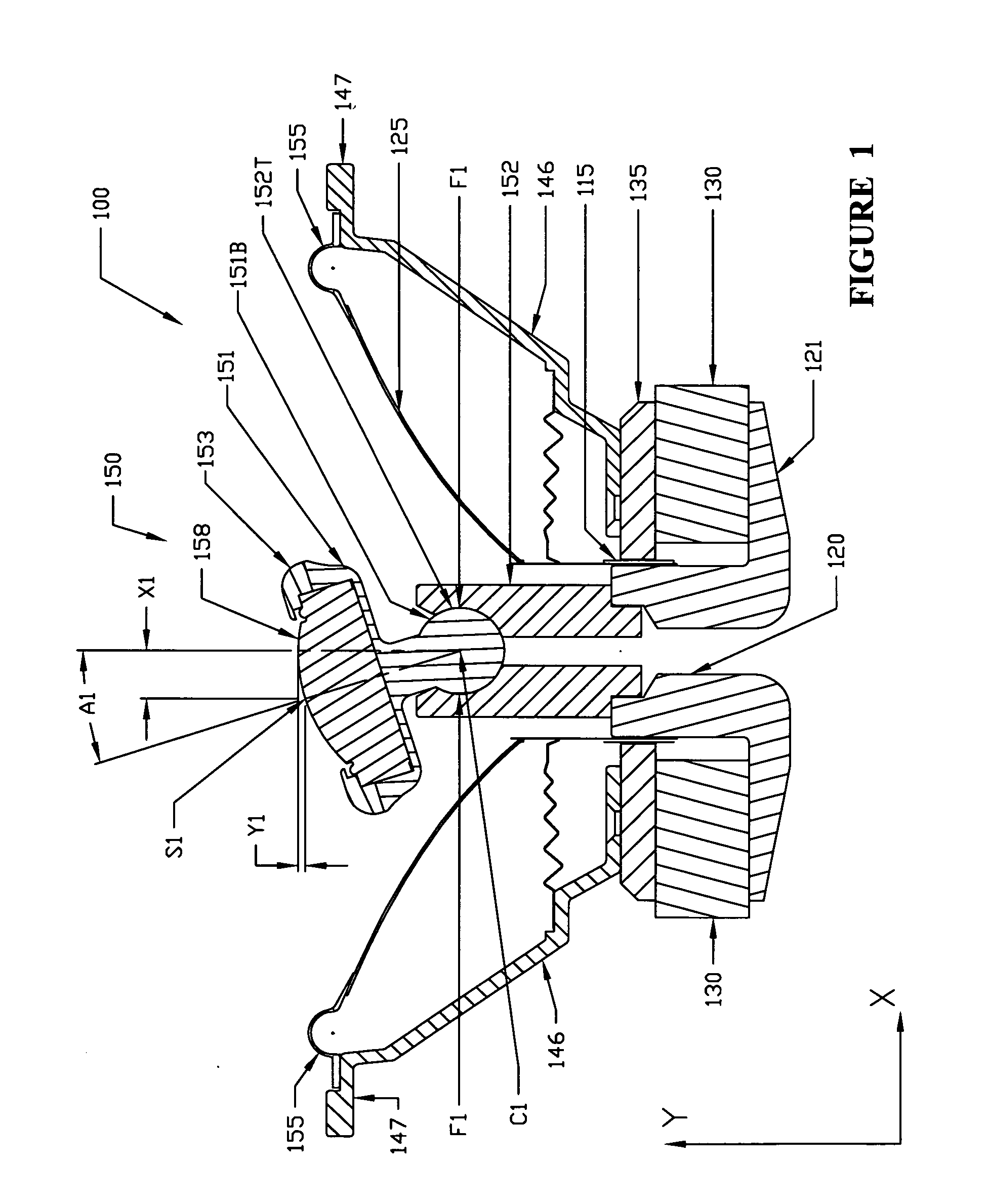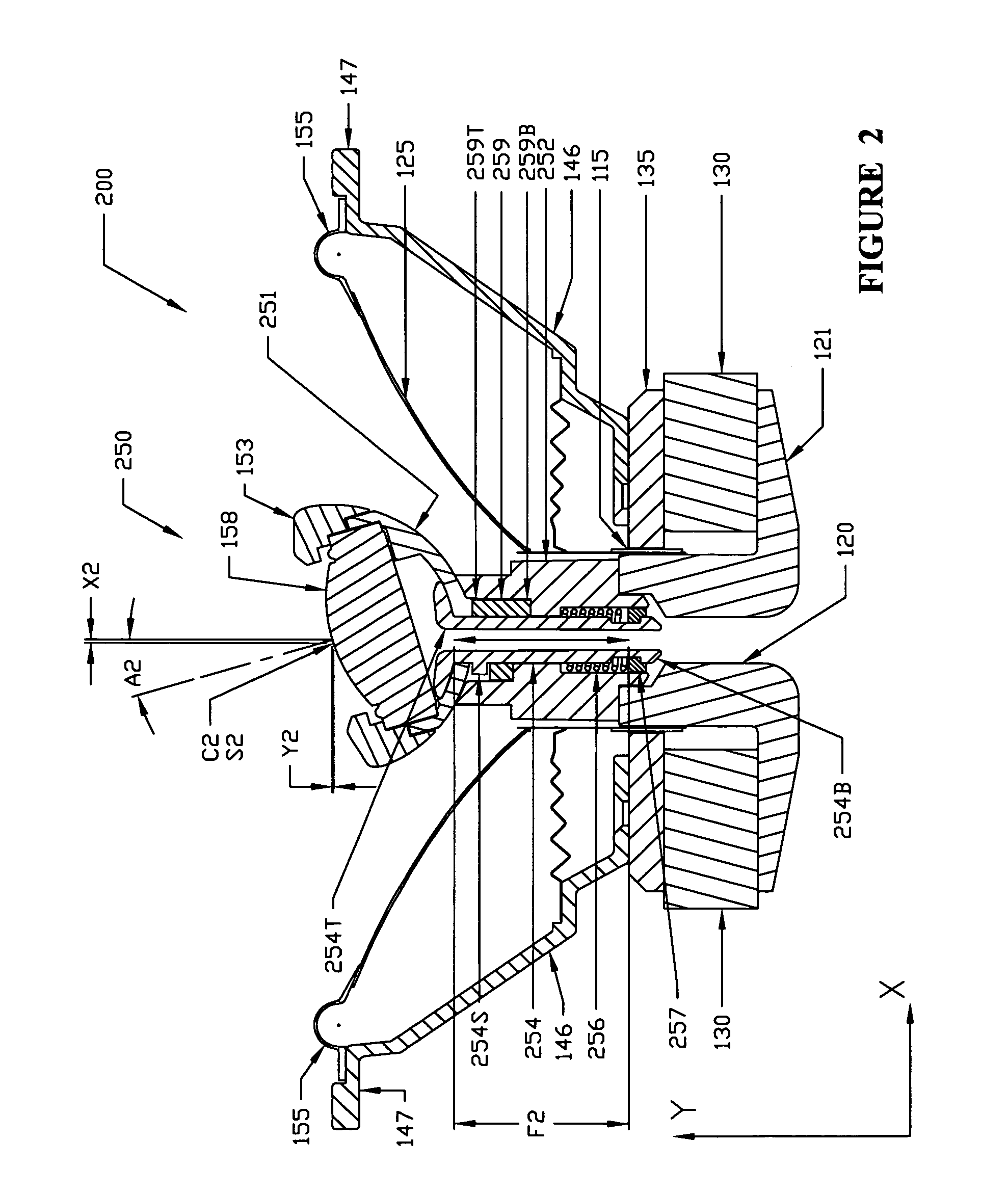Swivel tweeter mechanism for a constant phase coaxial acoustic transducer
a constant phase coaxial and tweeter technology, applied in the direction of transducer details, electrical transducers, electrical apparatus, etc., can solve the problems of affecting the sound fidelity of speakers, affecting the sound quality of speakers, etc., to achieve the effect of reducing the movement of perceivable air, and reducing the movement of air
- Summary
- Abstract
- Description
- Claims
- Application Information
AI Technical Summary
Benefits of technology
Problems solved by technology
Method used
Image
Examples
Embodiment Construction
[0024]Referring to FIG. 1, shown is a typical prior art adjustable tweeter 158 positioned in the center vicinity of a woofer-audio transducer, partially shown by a magnet 130 positioned next to a pole 120, and connected to a back-plate 121 at its bottom and front-plate 135 at its top. Voice coil 115 is positioned in the electromagnetic field of a magnet 130 and in between the front-plate 135 and the pole 120. An electrical signal representing an audio signal is connected to the coil 115. The current of the electrical signal changes the relative physical position of the coil 115 with respect to the magnet 130 and in turn drives a diaphragm 125, which is connected to the coil 115. The diaphragm 125 displaces the air thereby reproducing an audible signal.
[0025]The pole 120 supports a tweeter mounting post 152, which supports a tweeter assembly 150. The tweeter assembly 150 comprises a tweeter holder 151, which further comprises a base 151B at its bottom end and a tweeter waveguide 153 ...
PUM
 Login to View More
Login to View More Abstract
Description
Claims
Application Information
 Login to View More
Login to View More - R&D
- Intellectual Property
- Life Sciences
- Materials
- Tech Scout
- Unparalleled Data Quality
- Higher Quality Content
- 60% Fewer Hallucinations
Browse by: Latest US Patents, China's latest patents, Technical Efficacy Thesaurus, Application Domain, Technology Topic, Popular Technical Reports.
© 2025 PatSnap. All rights reserved.Legal|Privacy policy|Modern Slavery Act Transparency Statement|Sitemap|About US| Contact US: help@patsnap.com



